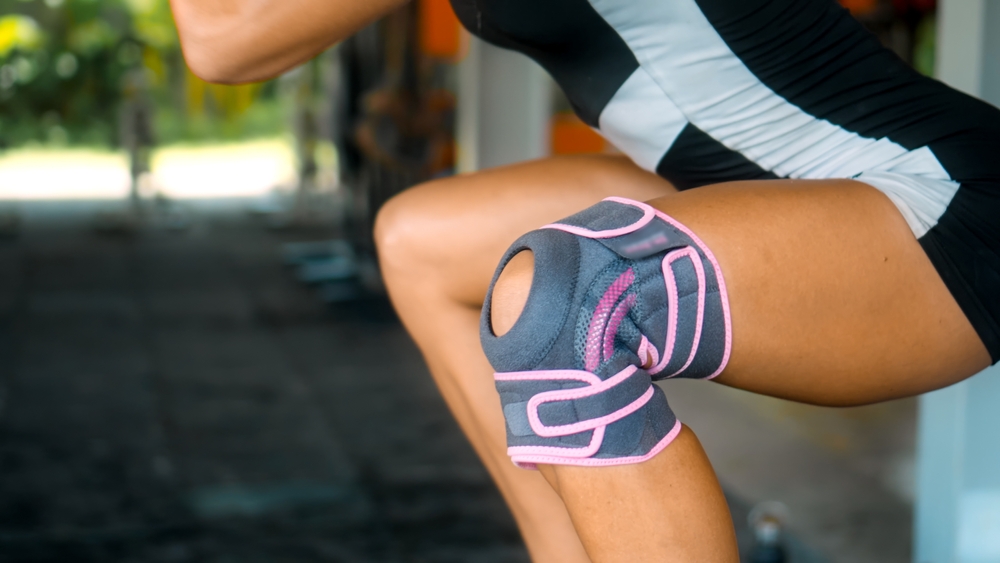How to train around an injury

This year, more than any other, I’ve been working with clients around their injuries, niggles and restrictions. After a recent client conversation I thought it was worth answering the question and saying – yes, you can still train around an injury. How we do this does of course depend on the injury you have we need to proceed with consideration and caution.
About 12 years ago I was running too much and too fast. I’d joined a running club and should have run with the slow group, but my pride got in the way, and I developed shin splints. If you have not had them, they are painful. It put me out of action for 2 months and during time I did absolutely no exercise, I sulked the whole time, sat at home frustrated and ate my way through loads of treats feeling sorry for myself. When I look back, I feel silly. I can think of loads of other exercise that I could have been doing that wouldn’t have agitated the shin splints, plus would have made me stronger for when I could return to running.
When a client reaches out to say they are in pain or they have had an injury diagnosis, I explain that there are a couple of approached that we can take. The simplest would be to avoid exercising the injured area but continue to train the rest of the body maintaining strength and working around the injured muscle or joint. This is a bit of drastic response. In certain circumstance it might be more preferable to modify movements, so we maintain a range of motion but without adding pressure to the injured area.
Client Case Studies
One of my clients has recently had a muscle spasm in her shoulder and neck. We have continued training while she has had it diagnosed and receives treatment from a physiotherapist. We have made adaptions to add in a longer warm up, some releases using a trigger point massage ball (tennis balls work really well too) and we flossed the nerve (like a stretch but for the nerve) just in case it was a trapped nerve. We’ve adapted the session to a heavier bias towards lower body exercises. The arm exercises we have been doing focused on mobilising the area under control so that a range of motion is maintained despite the restriction the pain causes. We have still completed bicep curls, triceps wall presses, and unweighted frontal raises but we have been avoiding overhead presses and planks that would put pressure on the area.
Here’s what Laura had to say ….
“I’ve realised how important it is to keep moving even when you have an injury! There is always something that you can do and Sara has shown me the benefits and adapted how I move in our weights and Pilates sessions. Hugely grateful!”
Another client, Sarah has unfortunately had an issue with bursitis in her hips and residual knee pain but again we have managed to continue to work out. We modified Sarah’s sessions to reduce the burden on her knees which means keeping to squats, deadlifts and wall sits, avoiding any actions that cause twisting at the knee, balance work or standing on one leg. We’ve also put a slight focus on strengthening glutes, as recommended by her physiotherapist. If standing became too much we did our arm exercises seated in a straight back chair. We train online twice a week and we continued to train so as not to lose strength or range of movement. It is important to listen to the body and respond as required.
Here’s what Sarah had to say…..
“I have a long-term health condition and keeping strong and flexible is important for my health. After a recent issue with bursitis in both hips which led to problems with my knees. Sara adapted my training plan to help me to keep attending sessions with her while protecting joints and muscles where needed. As this has now lasted for over 3 months, she has helped me maintain muscle strength and general fitness during a period when I could easily have given up and retired to a chair! I am very grateful to her for her knowledge and patience as she has coached me through this frustrating time!”
My final example, is my client Sophie, for a while now she has been experiencing knee pain and finds lunging and some single leg work uncomfortable. We have modified our workouts to do wall sits, resistance band squats, seated to stranding movement and seated straight leg lifts that all strengthen her quads and glutes without knee pain. We have been improving her core strength to reduce knee instability and therefore pain for the last six months. As Sophie is a horse rider, runner and a skier it is really important that we can still strengthen these key muscles during our sessions. We can exercise the rest of the body as usual, so that she can continue to do the other sports she enjoys, like tennis, pain free.
This is what Sophie has to say:
“Working with Sara in our personal training sessions to help manage my knee discomfort has been really key to my recovery, ensuring I can continue to participate in the sports I enjoy. Due to her knowledge, patience and professionalism, we have ensured we have adapted the training sessions safely. Thank you Sara!”
Having extra anatomy knowledge and knowing how to rehab diagnosed injuries really helps me feel confident that when a client is struggling, I can adapt their training as needed. You can read more about my additional training in this blog post Exercise as Therapy – Workshop – Revolutions Fit
If you have a diagnosed injury but are keen to return to fitness training, please get in touch to see how we can work together.
